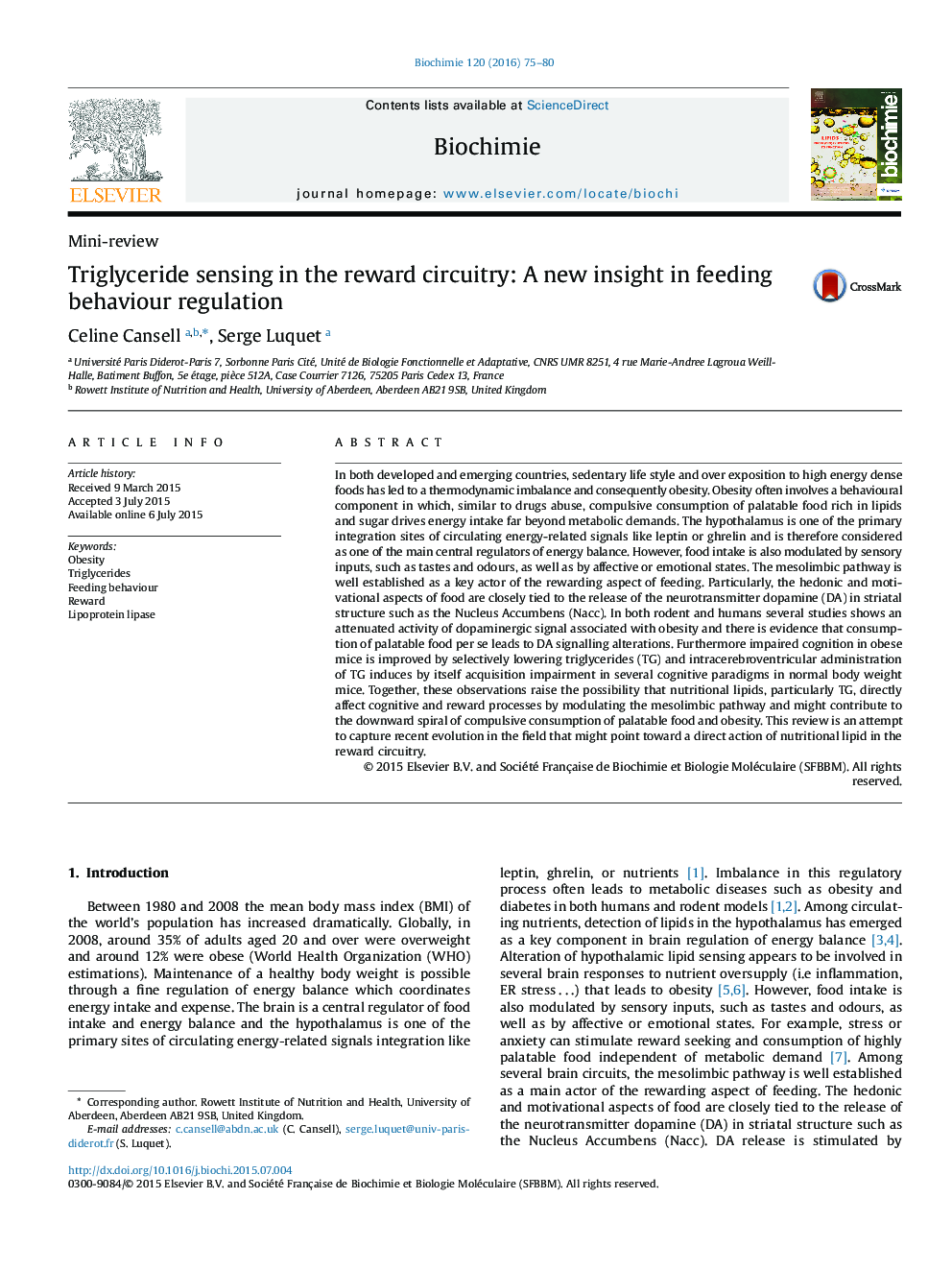| کد مقاله | کد نشریه | سال انتشار | مقاله انگلیسی | نسخه تمام متن |
|---|---|---|---|---|
| 8304545 | 1538411 | 2016 | 6 صفحه PDF | دانلود رایگان |
عنوان انگلیسی مقاله ISI
Triglyceride sensing in the reward circuitry: A new insight in feeding behaviour regulation
ترجمه فارسی عنوان
سنجش تری گلیسیرید در مدار پاداش: بینش جدید در تنظیم رفتار تغذیه
دانلود مقاله + سفارش ترجمه
دانلود مقاله ISI انگلیسی
رایگان برای ایرانیان
کلمات کلیدی
چاقی، تری گلیسرید، رفتار تغذیه، جایزه، لیپوپروتئین لیپاز،
موضوعات مرتبط
علوم زیستی و بیوفناوری
بیوشیمی، ژنتیک و زیست شناسی مولکولی
زیست شیمی
چکیده انگلیسی
In both developed and emerging countries, sedentary life style and over exposition to high energy dense foods has led to a thermodynamic imbalance and consequently obesity. Obesity often involves a behavioural component in which, similar to drugs abuse, compulsive consumption of palatable food rich in lipids and sugar drives energy intake far beyond metabolic demands. The hypothalamus is one of the primary integration sites of circulating energy-related signals like leptin or ghrelin and is therefore considered as one of the main central regulators of energy balance. However, food intake is also modulated by sensory inputs, such as tastes and odours, as well as by affective or emotional states. The mesolimbic pathway is well established as a key actor of the rewarding aspect of feeding. Particularly, the hedonic and motivational aspects of food are closely tied to the release of the neurotransmitter dopamine (DA) in striatal structure such as the Nucleus Accumbens (Nacc). In both rodent and humans several studies shows an attenuated activity of dopaminergic signal associated with obesity and there is evidence that consumption of palatable food per se leads to DA signalling alterations. Furthermore impaired cognition in obese mice is improved by selectively lowering triglycerides (TG) and intracerebroventricular administration of TG induces by itself acquisition impairment in several cognitive paradigms in normal body weight mice. Together, these observations raise the possibility that nutritional lipids, particularly TG, directly affect cognitive and reward processes by modulating the mesolimbic pathway and might contribute to the downward spiral of compulsive consumption of palatable food and obesity. This review is an attempt to capture recent evolution in the field that might point toward a direct action of nutritional lipid in the reward circuitry.
ناشر
Database: Elsevier - ScienceDirect (ساینس دایرکت)
Journal: Biochimie - Volume 120, January 2016, Pages 75-80
Journal: Biochimie - Volume 120, January 2016, Pages 75-80
نویسندگان
Celine Cansell, Serge Luquet,
